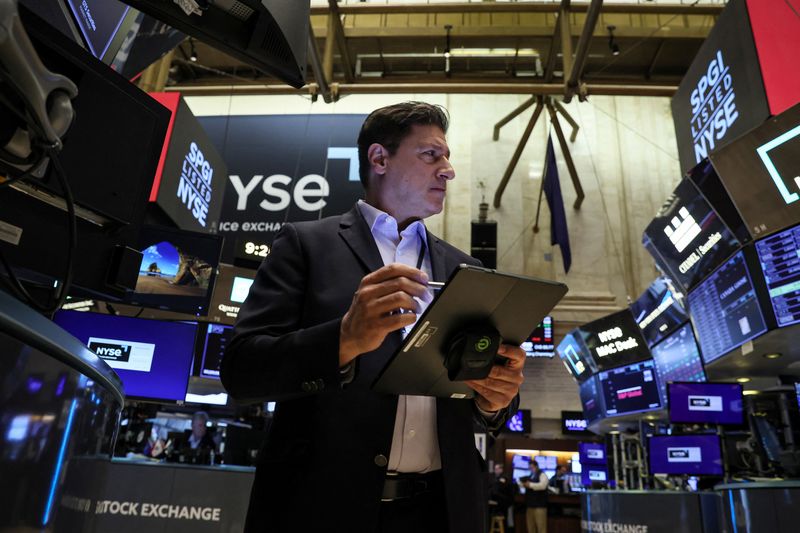By Sinéad Carew
NEW YORK (Reuters) -U.S. bank stocks have been attempting a comeback so-far this year after a more than 20% fall in 2022, fueled by hopes that the Federal Reserve will succeed in taming inflation without causing an economic catastrophe.
The S&P 500 bank subsector is up 4.9% so far in 2023 slightly ahead of the benchmark S&P 500's 3.3% gain.
But some investors are circumspect as banks themselves warned during earnings season in January that they expect higher loan losses and weaker demand for borrowing.
These worries stem from jitters about the economy, potential loan losses, as well as weaker loan demand due to increased borrowing costs since the Fed has been aggressively hiking interest rates since March 2022.
The rate increases have boosted banks' income, giving them the go-ahead to charge higher interest rates for loans. But now, bank customers with savings accounts are seeking out higher interest rates on deposits, offsetting some lending gains.
With U.S. data still showing a strong jobs market, equity market gains so far this year have been pinned on hopes that the Fed's efforts to dampen inflation would not thrash the economy.
And while its rate hikes have still not reduced inflation as much as investors had hoped, the Fed is still trying to negotiate a soft landing, said Rick Meckler, a partner at Cherry Lane Investments, a family investment office.
"For banks that is a sweet spot, being able to benefit from higher rates but not seeing the economy slow so much to generate losses and put a stop to investment banking activities," said New Jersey-based Meckler who adds that for banks, "the wind is really at their back right now."
UNCERTAINITY
The chief executives of big U.S. banks gave encouraging updates at conferences in mid-February. Goldman Sachs (NYSE:GS) CEO David Solomon said while things are still "very, very uncertain," sentiment had improved among CEOs with hopes for a softer economic landing than had been expected six months ago.
Bank of America (NYSE:BAC) CEO Brian Moynihan also said consumers were very solid with strong balances and credit availability, as well as increasing spending activity.
And on the corporate front, Morgan Stanley (NYSE:MS) finance chief Sharon Yeshaya said at the time that confidence was improving among client CEOs who had revived talks about potential deals with a fog of uncertainty "beginning to lift."
But Aaron Dunn, portfolio manager and co-head of value equity at Eaton (NYSE:ETN) Vance is monitoring by how much banks will increase the amount of interest they pay on their clients' deposits.
"If the Fed keeps moving and short rates stay elevated you want a bank that's going to have to pay the least to keep deposits," according to Dunn who sees banks offering multiple services under less pressure to boost rates.
Competing with the highest short-term Treasury rates in decade and a half, banks are having to raise savings account rates to keep deposits.
While Dunn saw last year as a "best case scenario" with low credit costs and rising net interest margins based on rate increases he doesn't expect a repeat this year. "What we're going to see this year is profitability normalizing through net interest margin contraction and rising credit costs," he said.
But still, the money manager recommends keeping "high quality exposure" to the banking sector. He points to strong deposit bases at Wells Fargo (NYSE:WFC) and M&T Bank (NYSE:MTB).

Barclay's analyst Jason Goldberg sees economic strength as a bigger factor for bank stocks this year than the Fed hikes path.
"Given that the Fed is through the bulk of its tightening cycle, what impact the rate moves have on the economy is in focus," said Goldberg.